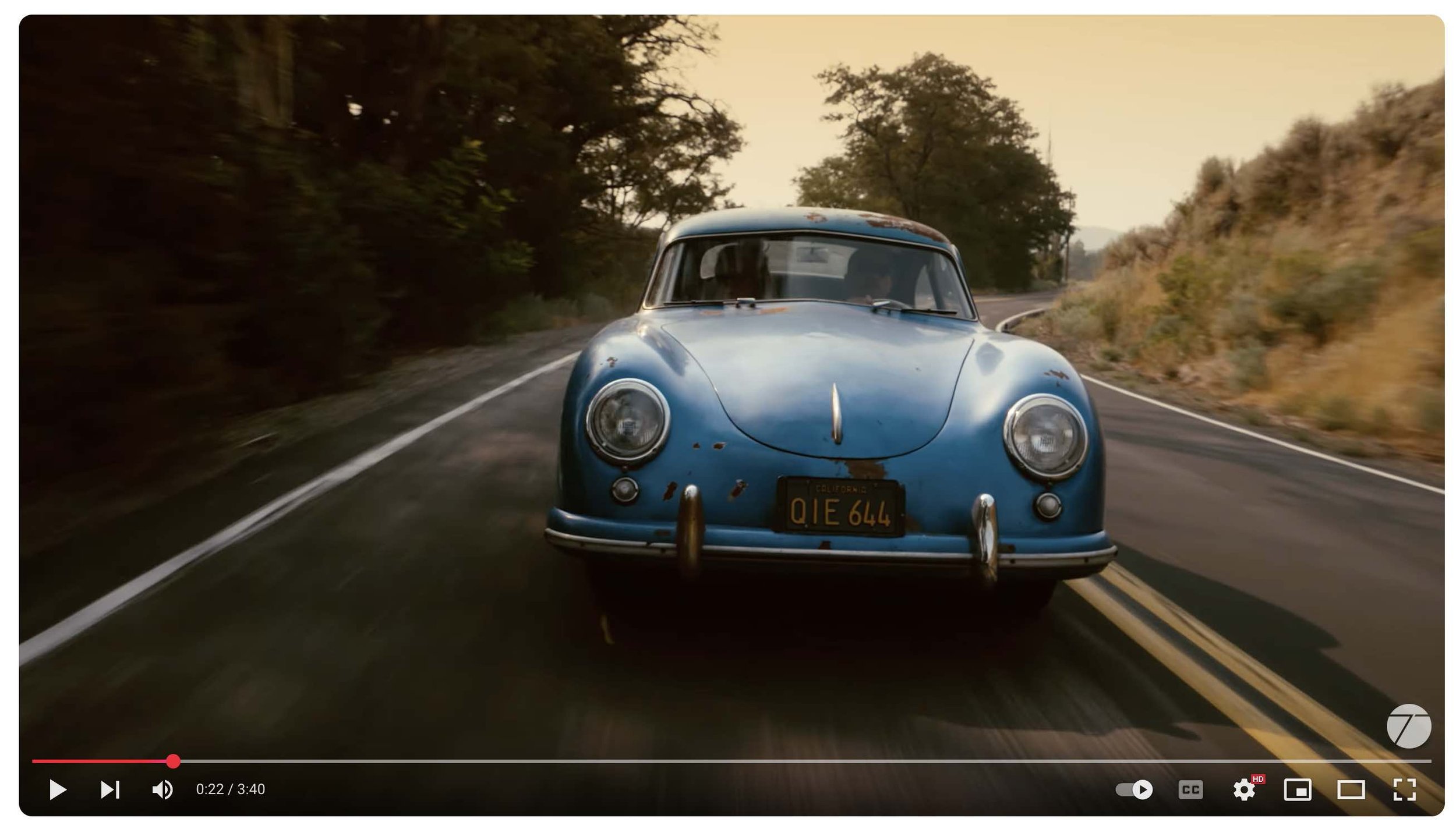“A man after my own heart”—what does it mean?
Usually it means that someone (the subject in this case is Hiroki Nakamura) is in compliance with my intent, my will, my inclination. My heart. In other words, I “get” this guy, I really do (link).That beat up old 1960 Porsche, by the way, is a 356 and I had one a lifetime ago. Slate grey. What a machine. My heart beats a little faster when I see one. I swear that’s not a tear; I got something in my eye is all.
I love me some old cars and bikes, would like to have some of them back, like that jazzy el camino with the loud pipes…
And that motorcycle he’s fooling with, same story. That model of Harley—I had some old soul scooters, too. An old 40’s knucklehead, and a somewhat newer 60’s panhead. Ungainly big hog but once you got the center of gravity synched with your own weight, my gosh, it was power and torque that made any trip an adventure, whether to pick up a loaf of bread, or get totally lost for a week in Blue Highway country.
My panhead beast was a sixties police bike (precinct five in Milwaukee had an auction and I won. Or lost, depending on your point of view. The mains were fried and the motor had to be totally rebuilt) with a tank shift, and it sounded like Nakamura’s when it finally ran again.
Friends and I modified it beyond any semblance of safety and accepted engineering practices of the day. I sold it to The Outlaws MC, Milwaukee chapter, being a man after their own hearts, I guess, because they seemed to approve of the customizing and paid cash in $100 bills. I never saw it or them again, though I’ve owned Harleys before and since.
Anyway, enjoy the short (3 min, 30 sec) video—it’s kind of a classic, whatever the vehicles in your past. (Here’s that link, again.) Thanks, Hiroki. You pushed some heart buttons with this one.
A thousand footprints in the sand
That’s from a song I first heard in 1982 by Tejano singer Freddy Fender titled Across the Borderline. It’s a haunting collaborative writing effort by Ry Cooder, John Hiatt and Jim Dickinson and it could well be the anthem of immigration.
While searching the various covers of it, I came across this comment by one who crossed that borderline:
“I was in the US in 2010, illegal by the way, and while listening to this song, I could not believe that a gringo would have written this song. I do not use the word to offend, just to show how the artist was able to understand what so many people go through when you leave all your history in order to find a better life.”
I thought about that. It must be terrifying. And it takes grit. For many of us, our hearts align with immigrants whose values we share, and to the border patrols who face the ones whose values are nil. No easy answers here, but the big sweep will deprive us of people we would welcome, and who would become useful, pay-their-own-way citizens.
I have to say few have approached Fender’s quiet fervor in performing this anthem, in my opinion, but I’ve chosen some versions that I like. I left out a few famous singers, who I felt phoned it in—I won’t name them but you’ll encounter them should you do your own search. Gaby Moreno, being hispanic, does it with honors and a beautiful voice. I’d love to hear her friend, Calexico’s Joey Burns, do the whole thing—he seems to respect it.
Here are the versions, and each is a youtube link to a performance. Do Freddy Fender, if you do no others.
Freddy Fender
Calexico
Gaby Moreno, Jackson Browne
Ensemble Ibericus
Why? Because it was(n’t) there
Somebody (my early opinion, only) has too much time and money. They built a skateboard platform that floats (link). Why? It’s an expensive way to get noticed or find that elusive virality. Or it may be a clever promo for the builder,
Proprietor Hana’s Donuts, Kansas City, KS, looking wistfully at the front door where zero customers are entering, thinking “What can I do to move some really good donuts today?”





